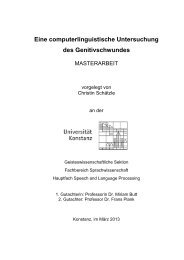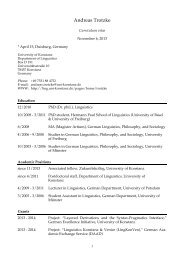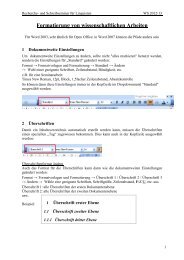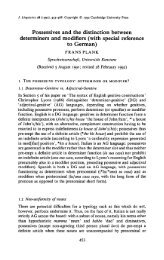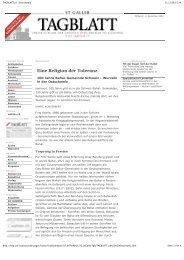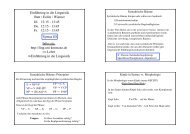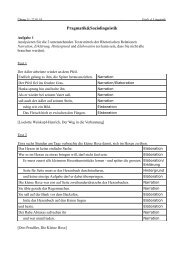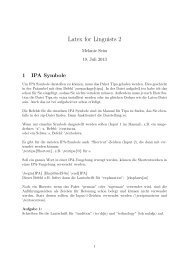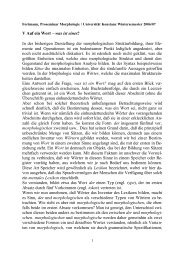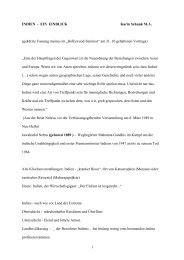5. Morphology in Relation to Phonology
5. Morphology in Relation to Phonology
5. Morphology in Relation to Phonology
You also want an ePaper? Increase the reach of your titles
YUMPU automatically turns print PDFs into web optimized ePapers that Google loves.
F. Plank, <strong>Morphology</strong> I: <strong>5.</strong> <strong>Morphology</strong> <strong>in</strong> <strong>Relation</strong> <strong>to</strong> <strong>Phonology</strong> 45<br />
Gruft.<br />
Gruft.<br />
usual syllabification<br />
first syllable maximal, no need <strong>to</strong> leave<br />
anyth<strong>in</strong>g out<br />
In addition there are certa<strong>in</strong> cluster simplifications, e.g.:<br />
Ost-i > Ossi, Osk-i > Ossi, Birg-i > Biggi.<br />
The only potentially problematic cases from the list above are Manni<br />
and Depri: Why problematic?<br />
With -i suffixed <strong>to</strong> the rema<strong>in</strong><strong>in</strong>g maximal syllable we get words<br />
form<strong>in</strong>g a trochaic foot (σ ́σ).<br />
Thus, the motivation for the special reductive morphology of such -i<br />
words is phonological, def<strong>in</strong>ed <strong>in</strong> terms of (maximal) syllables and<br />
(trochaic) feet.



